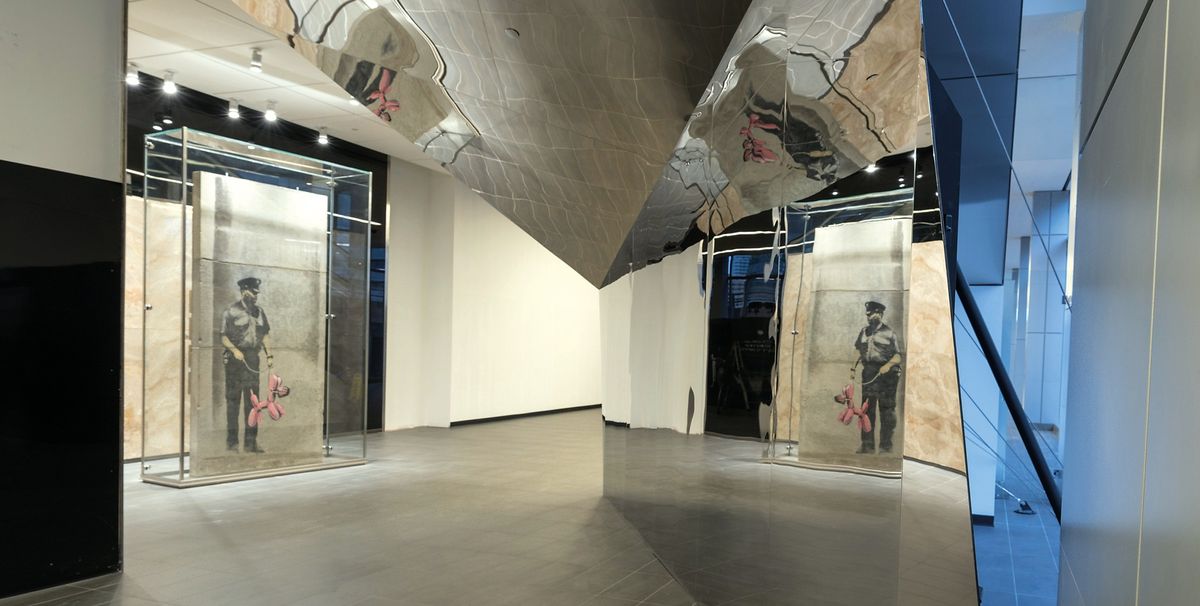A work attributed to the anonymous British street artist Banksy has been conserved and put on public display in Toronto by a Canadian real estate company. Known as Guard with Balloon Dog, the piece was recently unveiled at its new location in a pedestrian walkway network called the Path. The work originally appeared on the wall of a vacant building in May 2010, around the time that the artist was in town to release his film, Exit Through the Gift Shop, and has reportedly been featured on Banksy’s website. Menkes Developments bought the building, and with it Banksy’s stencil, in 2011 and had the work cut out before clearing the site. “We really wanted to preserve this, firstly because we liked it and secondly because we thought it was a special piece of Toronto,” says the company’s vice-president Jared Menkes.
Guard with Balloon Dog was professionally treated by conservators to brighten the faded paint and remove graffiti and tags that had been added around the work. “Originally the artist did this installation rather quickly. However, luckily, we had the luxury of spending much more time,” says Alexander Gabov, a conservator at the firm Conservation of Sculptures, Monuments and Objects (CSMO). The question of conservation in street art is complicated, given that it is common practice to add to or build upon another artist’s work, and Gabov recognised the controversial nature of prioritising one piece of graffiti over another. “One can argue for that extra graffiti or against it. Our responsibility was to remove it and to remove it successfully and I feel we have,” he says.
After the treatment was complete, the piece, which was cut into three slabs when it was removed from its original site, had to be reconstructed. The team decided that the work should be freestanding “so that people could walk around the piece and engage with it as though it were itself an artefact”, says Matt Meagher, the founder and president of Museumpros Art Services, which was responsible for the reassembly. The team created a metal armature to go around the back and sides of the work to make it sturdy. The work was then placed in a Perspex box, to protect it from future damage, and put on display in the Path.
Banksy has spoken out against the sale of his works, which often achieve seven-figure sums, but, although the developer did have the work valued, Jared Menkes says their project is different. “Some people have the opinion that if it’s on the street it shouldn’t be cut out of the wall and resold. We had no intention of doing that. We liked the piece, we wanted to keep it. We wanted to give it back to the public,” he says.


